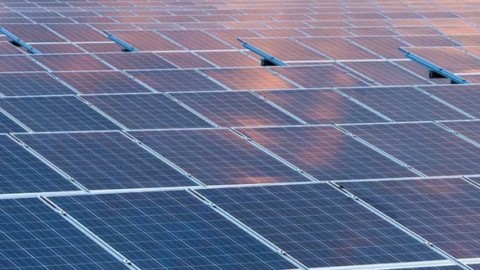The NSW Government has released its Electricity Infrastructure Roadmap, which outlines a plan to inject over 9,000 jobs and $32 billion of private investment into the state by 2030.
The Roadmap lays out the Government’s 20-year plan to deliver Renewable Energy Zones (REZ), energy storage such as pumped hydro, and on demand supply like gas and batteries, needed to reduce emissions and provide cheap, reliable electricity across the state.
NSW Deputy Premier, John Barilaro, said the Roadmap will deliver Australia’s first Renewable Energy Zones in the Central West and New England regions by 2030.
“The stimulus the Renewable Energy Zones will unlock over 9,000 new jobs and will be a huge boost to farmers and landowners, with $1.5 billion in lease payments expected to go to landholders hosting new infrastructure by 2042,” Mr Barilaro said.
“The Roadmap will make sure that renewables are developed where regional communities want them and where they are compatible with farming.”
NSW Treasurer, Dominic Perrottet, said the Roadmap will grow the economy, create jobs and deliver an expected $32 billion of private sector investment in electricity infrastructure by 2030, part of the NSW Government’s COVID-19 Recovery Plan.
“Coming out of this crisis, not only are we stimulating the economy to create jobs now, we are looking towards the reforms NSW needs to secure our future,” Mr Perrottet said.
“This is a big productivity reform, with the Roadmap projected to deliver NSW some of the cheapest energy prices in the OECD and shore up our energy security.”
NSW Energy Minister, Matt Kean, said the Roadmap will support the private sector to bring 12GW of renewable energy and 2GW of storage, such as pumped hydro, online by 2030.
“Our priority is to keep the lights on and get power prices down, with the Roadmap forecast to save NSW households an average of $130 and small businesses an average of $430 on their electricity bills each year,” Mr Kean said.
“NSW has some of the best natural resources in the world and this Roadmap is about acting now to leverage our competitive advantage and to position NSW as an energy superpower.”
NSW Water Minister, Melinda Pavey, said the Roadmap includes $50 million in grants to support the delivery of pumped hydro projects.
“Pumped hydro is a proven form of large-scale storage and NSW has some fantastic pumped hydro opportunities,” Ms Pavey said.
“This plan delivers the long term certainty needed for the private sector to invest now and drive jobs and investment in the regions.”
Member for Dubbo, Dugald Saunders, said the Roadmap cements the region as the renewable hub of the future.
“Our community is thrilled to have the State’s first Renewable Energy Zone right here in the Central West, unlocking opportunities for jobs and investment that will be the foundation for our future prosperity,” Mr Saunders said.
The Roadmap sets out a plan to modernise the state’s electricity infrastructure by:
- Cutting red-tape and speeding up approvals for transmission infrastructure in Renewable Energy Zones, while protecting the interests of consumers
- Creating a long term investment signal for new generation in Renewable Energy Zones, long duration storage such as pumped hydro, and on demand supply, like gas and batteries
- Making sure that renewable projects proceed where local communities want them and in ways that are consistent with farming
Industry responds
Energy Consumers Australia interim CEO, Lynne Gallagher, welcomed the Roadmap, saying it was an important step in driving investment in a modern energy system and significantly reducing electricity prices.
Ms Gallagher said with four existing generation plants set to retire in the coming years, it was critical to plan with consumers for the energy transition ahead. She also flagged the importance of consumer monitoring of the future investments underpinned by the Roadmap.
“This Roadmap is an important step forward in NSW as we plan for the fundamental transformation of the energy sector, which is being driven by technology and changing consumer demands,” Ms Gallagher said.
“The energy system of 2030 will look very different from what we have today and if you are setting out to redesign something as fundamental to peoples’ lives and businesses as the energy system, you really have no option but to do it with people rather than to do it to them.
“The role of the Consumer Trustee in the Infrastructure Safeguard is critical to the success of the Roadmap as a way of measuring and monitoring the success of the strategy against the KPI of benefit for consumers.
“We would also like to see this focus on consumers extended with a structured engagement that actively monitors the cost of new transmission investments and ensures the earliest flow through of benefits.
“We need to make sure consumers have oversight of the investments which this strategy will underpin in the transmission sector to ensure they are the right options, delivered at lowest possible cost.
“In the end, the success of this strategy will be how far it drives down electricity prices in the coming years for households and small businesses.”
Ms Gallagher said the Roadmap dealt primarily with the issue of larger scale energy supply and should be coupled with an equally substantive strategy for working with consumers on the demand side.
“There are really two transitions under way. One is the transition to a modern energy system built around renewable electricity supply and storage grid, which is necessary but costly,” Ms Gallagher said.
“The second is equally critical to a least cost future and would support consumers and their investments in distributed generation, storage and smart technology to achieve flexible demand at scale.
“Our research shows that the vast majority of consumers are willing to take action to manage their energy use differently, but they need to be engaged and often rewarded.
“Working with consumers and rewarding people who want to manage their energy use with new technology, or simply reducing their energy use, particularly in peak periods, is the big opportunity of the next decade and beyond.”
Clean Energy Council Chief Executive, Kane Thornton, said that the NSW Electricity Infrastructure Roadmap places three new renewable energy zones firmly at the centre of the state’s transition, providing strong support to private investors to build new generation and storage assets in these locations.
“This ambitious new plan sets NSW up to be Australia’s number one destination for renewable energy investment over the coming decade,” Mr Thornton said.
“It will provide tremendous confidence to private investors about when and where a new generation is needed, while resolving a number of the key barriers to investment, such as access to the necessary transmission capacity, investment certainty through long-term energy services agreements and addressing slow and costly planning processes.
“In doing so, the Berejiklian Government will unlock $32 billion of new investment in regional NSW and support an estimated 6,300 construction jobs and 2,800 ongoing jobs.
“This will be transformative for the central west and New England communities, providing long-term employment pathways in the clean energy sector and creating greater resilience for regional and farming communities through landholder payments and community benefit schemes.
“Importantly, it also demonstrates that the clean energy transition will not cost consumers more, but rather save households $130 per year on their electricity bills.
“There will be much detail to be worked through over the coming months as the state looks to implement its vision, and the Clean Energy Council looks forward to working with the state government to support the smooth implementation of its plan.
“The implications for existing generators within renewable energy zones should be considered to ensure that their value is not jeopardised. Other advanced prospective projects across NSW should also continue to be assessed on their merits.
“This is a comprehensive framework for NSW to take control of its clean energy transition and maximise the benefits for electricity consumers and regional communities, and we applaud the state government’s leadership.”
















